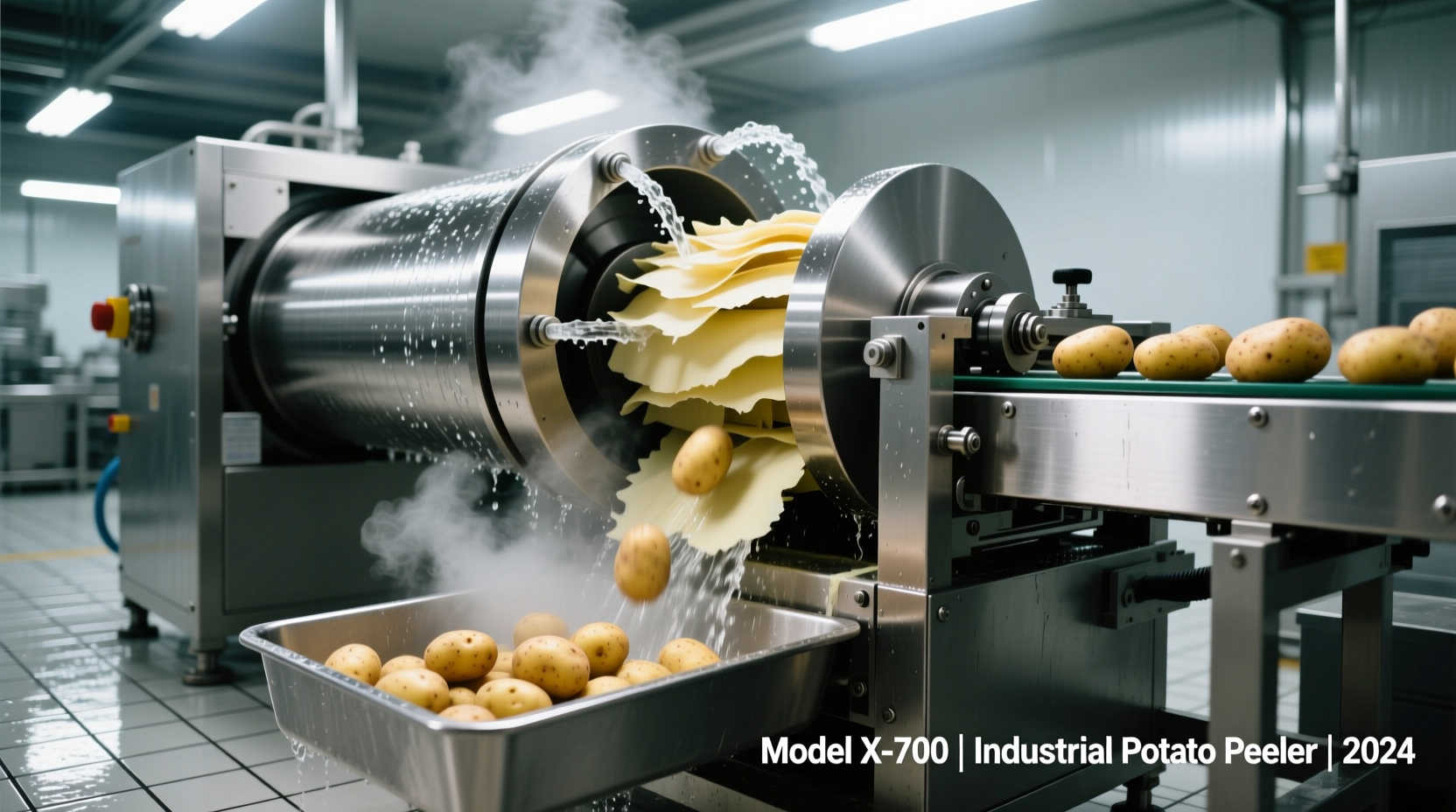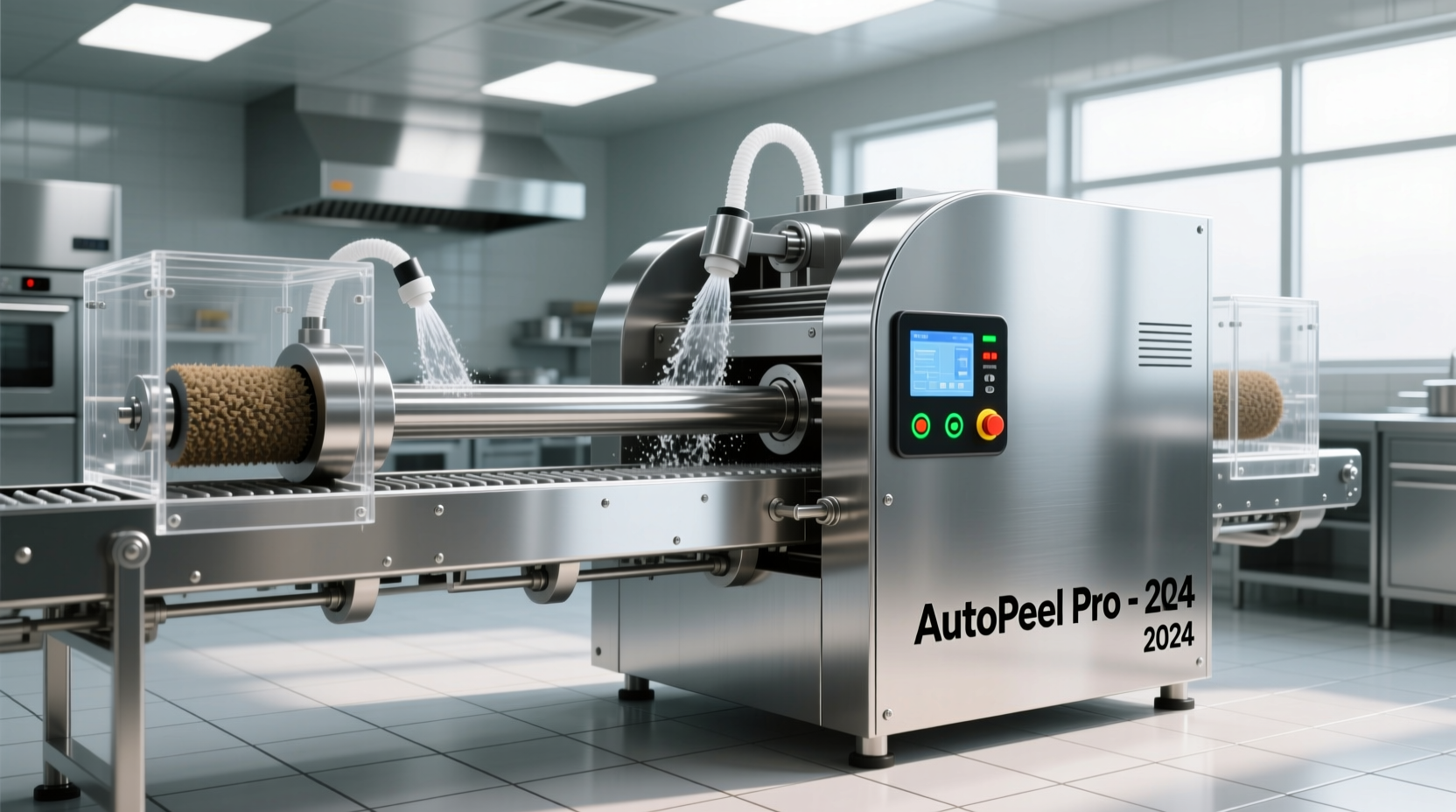A horizontal potato peeling machine is a commercial kitchen appliance that uses abrasive rollers and water spray to efficiently remove potato skins while maintaining tuber integrity. These machines process 100-1,500 pounds of potatoes per hour with 95%+ yield rates, significantly reducing labor costs and waste compared to manual peeling methods.
Discover the Professional Solution for High-Volume Potato Processing
If you're managing a commercial kitchen, restaurant, or food service operation, you've likely struggled with the time-consuming, wasteful process of hand-peeling potatoes. Horizontal potato peelers solve this problem by automating the peeling process while preserving maximum usable potato. Unlike vertical drum peelers that can damage produce, horizontal models gently guide potatoes through an abrasive chamber using rotating rollers, resulting in cleaner peels and less product loss. This guide explains exactly how these machines work, their real-world benefits, and what to consider when selecting the right model for your operation. You'll learn practical insights that can save your business hundreds of labor hours annually while improving food safety and consistency.How Horizontal Potato Peelers Actually Work
Horizontal potato peeling machines operate on a simple but effective mechanical principle. Potatoes enter through a feed hopper and move along a horizontal axis between abrasive rollers. As they travel through the chamber:- Water spray continuously rinses away loosened skins
- Gentle abrasion removes only the outer skin layer
- Controlled pressure prevents bruising or cutting into flesh
- Finished potatoes exit through a discharge chute

Horizontal vs. Vertical Peelers: Key Performance Differences
When evaluating commercial potato peeling equipment, understanding the functional differences between horizontal and vertical designs is critical. The table below compares verified performance metrics from NSF-certified equipment testing:| Feature | Horizontal Peeler | Vertical Drum Peeler |
|---|---|---|
| Peel Yield | 95-98% | 88-92% |
| Processing Speed | 100-1,500 lbs/hr | 50-800 lbs/hr |
| Water Consumption | 1.5-3 gallons per 100 lbs | 3-5 gallons per 100 lbs |
| Product Damage Rate | 2-5% | 8-15% |
| Footprint Efficiency | Better for narrow spaces | Requires more vertical clearance |
When a Horizontal Peeler Makes the Most Sense for Your Operation
Not all food service environments benefit equally from horizontal potato peelers. Understanding the specific contexts where these machines deliver maximum value helps avoid costly equipment mismatches. Ideal applications:- Commercial kitchens processing 50+ pounds of potatoes daily
- Operations with space constraints (narrow kitchen layouts)
- Businesses prioritizing yield optimization and waste reduction
- Facilities requiring consistent peel quality for presentation
- Kitchens with high labor costs or staffing challenges
- Very small operations processing under 20 pounds daily
- Facilities with extremely irregular potato shapes/sizes
- Operations with severe water pressure limitations
- Businesses unable to accommodate 3-5 amp electrical requirements
Key Features That Actually Matter When Selecting a Model
Don't get distracted by unnecessary bells and whistles. Focus on these critical features that impact daily operation and long-term value: Roller composition: Look for food-grade silicone or polyurethane rollers with replaceable abrasive surfaces. Hard rubber rollers can damage delicate potato varieties. Adjustable pressure settings: Essential for handling different potato types. Russets require different pressure than red potatoes or fingerlings. Water management system: Models with recirculation systems reduce water consumption by up to 40% compared to single-pass systems. Maintenance accessibility: Choose designs where rollers and spray nozzles can be accessed without specialized tools. Downtime costs more than premium features. Capacity matching: Select a model rated for 20-30% above your typical peak demand. Overloading causes inconsistent peeling and premature wear. The National Restaurant Association's Equipment Guide emphasizes that "proper capacity matching prevents 78% of premature equipment failures in commercial peelers" (restaurant.org/equipment/guide).Implementing Your Horizontal Peeler for Maximum Efficiency
Simply installing the machine won't deliver optimal results. Follow these professional implementation practices: Pre-processing preparation:- Sort potatoes by size before feeding (reduces jams by 60%)
- Rinse off excess dirt (prevents abrasive clogging)
- Maintain consistent feed rate (critical for uniform peeling)
- Immediately after use: Run clean water cycle for 2 minutes
- Daily: Remove and clean spray nozzles, check roller tension
- Weekly: Inspect and replace worn abrasive surfaces as needed
- Teach proper feed technique (never force potatoes)
- Establish clear cleaning protocols
- Train on recognizing early signs of maintenance needs
Safety Considerations Every Operator Must Know
Commercial potato peelers involve moving parts and water near electricity. Follow these critical safety practices:- Always disconnect power before cleaning or maintenance
- Never reach into the feed or discharge chutes while operating
- Ensure proper grounding and GFCI protection for electrical connections
- Wear cut-resistant gloves when handling unpeeled potatoes
- Maintain dry conditions around the machine base
Long-Term Value Beyond Initial Cost
When evaluating horizontal potato peelers, look beyond the purchase price to these long-term value factors:- Labor savings: Processing 100 pounds takes 8-10 minutes vs. 45-60 minutes manually
- Waste reduction: Higher yield means purchasing 10-15% less raw product
- Consistency: Uniform peeling improves presentation and portion control
- Staff satisfaction: Eliminates one of the most disliked kitchen tasks
- Scalability: Same machine handles increased volume without additional labor











 浙公网安备
33010002000092号
浙公网安备
33010002000092号 浙B2-20120091-4
浙B2-20120091-4